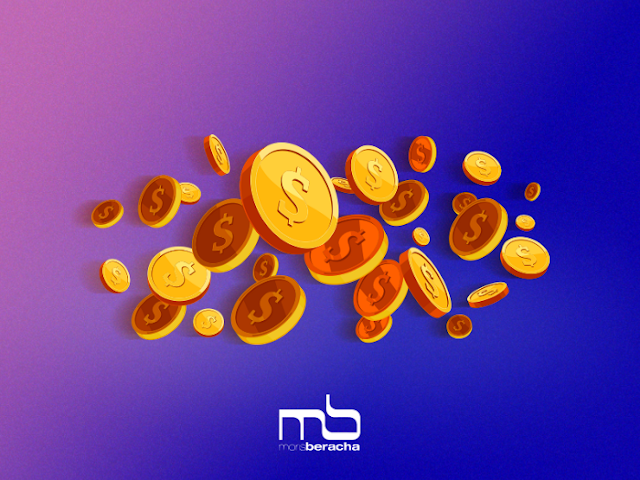Why Everyone In Crypto Is Talking About DeFi
By
Jeff Kauflin
A new movement is pumping oxygen into the
cryptocurrency industry despite asset prices that remain 75% lower than
where they were in late 2017. It’s called DeFi, short for decentralized
finance—it’s the notion that crypto entrepreneurs can recreate
traditional financial instruments in a decentralized architecture,
outside of companies’ and governments’ control. And with fresh allegations
of misused funds against the centrally controlled cryptocurrency
tether, the argument for decentralized applications has become even more
relevant.
But newer apps are dominating the DeFi conversation. The “stablecoin” Dai is a bitcoin-like digital token that aims to be a global currency untouchable by central banks. Unlike bitcoin, its value is pegged to the U.S. dollar, drastically reducing the volatility that prevents bitcoin from being practical for everyday purchases. Compound is a crypto version of a money market fund, letting users earn interest. Dharma lets you issue and underwrite debt to gain investment returns.
“The goal of DeFi is to reconstruct the banking system for the whole world in this open, permissionless way,” says Alex Pack, managing partner at Dragonfly Capital, a $100 million crypto fund. “You only get that shot every 50 years.”
Salil Deshpande, a partner at Bain Capital Ventures who leads the firm’s crypto investments, thinks people first became interested in DeFi because “they have a libertarian streak.” They like that they can build censorship-resistant products, and some developers are simply fascinated with the technology and its capabilities.
The most powerful effects of DeFi applications, Deshpande says, will
take shape over the long term. He points to Venezuela, where a steep
drop in oil prices and poor government policies like printing vast
amounts of money have crushed the economy, with inflation exceeding
1,000,000% last year, according to the IMF. “Central banks are just
people, and people make mistakes,” Deshpande wrote in a 2018 blog post.
Decentralized financial applications “can make our financial systems
more transparent, more resilient and less fragile,” he says.
Jill
Carlson, a former Goldman Sachs trader and strategy lead at blockchain
company Chain, has been researching how Venezuelans are using digital
assets to combat hyperinflation as part of a nonprofit she cofounded,
the Open Money Initiative. “Crypto is not saving Venezuela,” she says.
But bitcoin is being used by small numbers of people as a tool to
protect against inflation and to send money to family members in other
countries.
Dai, the most widely used
DeFi application not counting Bitcoin and Ethereum, has spiked in
popularity over the past six months, although adoption remains very low.
About 21,000 people currently hold the asset, and in early April, it
hit a peak number of daily transactions at 13,490. That’s up from less than 500 average daily transactions in the first few months after it launched in late 2017.
The
software behind Dai is technologically complex and consists of over
1,000 lines of code, “which is a lot for crypto,” Dragonfly Capital’s
Alex Pack says. It lays out rules for how new Dai are minted and how the
system is maintained. For example, to create $100 worth of new Dai,
users must pledge $150 of ether. They must also pay an interest rate or
“stability fee,” because they’re borrowing Dai when they create it. Dai
has a sister currency called MKR, and people who hold MKR vote to
determine Dai’s interest rate.
Two percent of all ether, or about
$339 million worth of ether, is locked up in Dai. Compound has about
$34 million in locked ether, while Dharma has roughly $10 million.
The stablecoin tether has much more usage and adoption—it surpassed 44,000 transactions on April 4, according to Coin Metrics. But it’s not decentralized, since it’s managed by iFinex, a widely scrutinized Hong Kong company recently accused
of moving money from its tether stablecoin reserves to cover up for
$850 million in missing funds on its Bitfinex exchange. Such incidents
make the case for a decentralized currency even more compelling.
Despite
the potential for noble use cases of Dai, like helping residents of
troubled countries, people are primarily using it to make bigger,
leveraged bets on Ethereum. Investors can pledge ether to borrow Dai,
and then use that Dai to buy more ether. A second use case: Traders who
want to exit out of a volatile cryptocurrency can swap it for Dai
instead of a fiat currency. Dai is also being used as money by
“financially underserved communities, such as many people in South
America,” says Rune Christensen, CEO of the Maker Foundation, the
nonprofit that built Dai’s software.
What are the biggest risks
of DeFi applications? “The smart contracts could be hacked,” Pack says.
“There could be a backdoor that allows someone to steal all of your
keys. But you’re trusting in open-source code—over time, many eyes are
looking at it.” Christensen notes that Dai’s software has been audited four times by well-respected security research firms like Trail of Bits.
While
the DeFi movement has many fans, some traders don’t think it will move
the needle on cryptocurrency adoption. “Technologically, I think it’s
brilliant,” says Jeff Dorman, chief investment officer at digital asset
management firm Arca. But he sees more promise in a stablecoin created
by a large company with many users, pointing to recent reports that Facebook is working on one. “Ultimately, distribution wins out,” he says.
Dorman
doesn’t mind that Facebook’s coin would be centralized. “That’s why so
many passionate libertarians and government anarchists are in crypto,”
he says. “They see this utopian future that we one day might get to, but
we’re not getting there overnight. So let’s walk before we run.”
Published in: https://www.forbes.com/sites/jeffkauflin/2019/04/26/why-everyone-in-crypto-is-talking-about-defi/#1214fbb6723f




Comentarios
Publicar un comentario